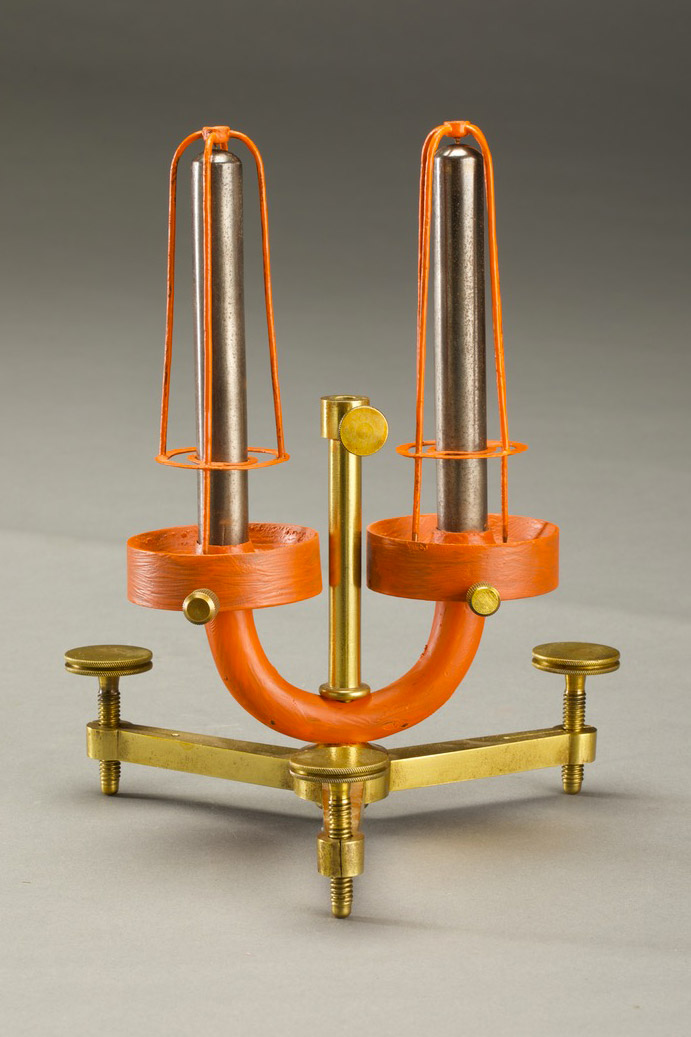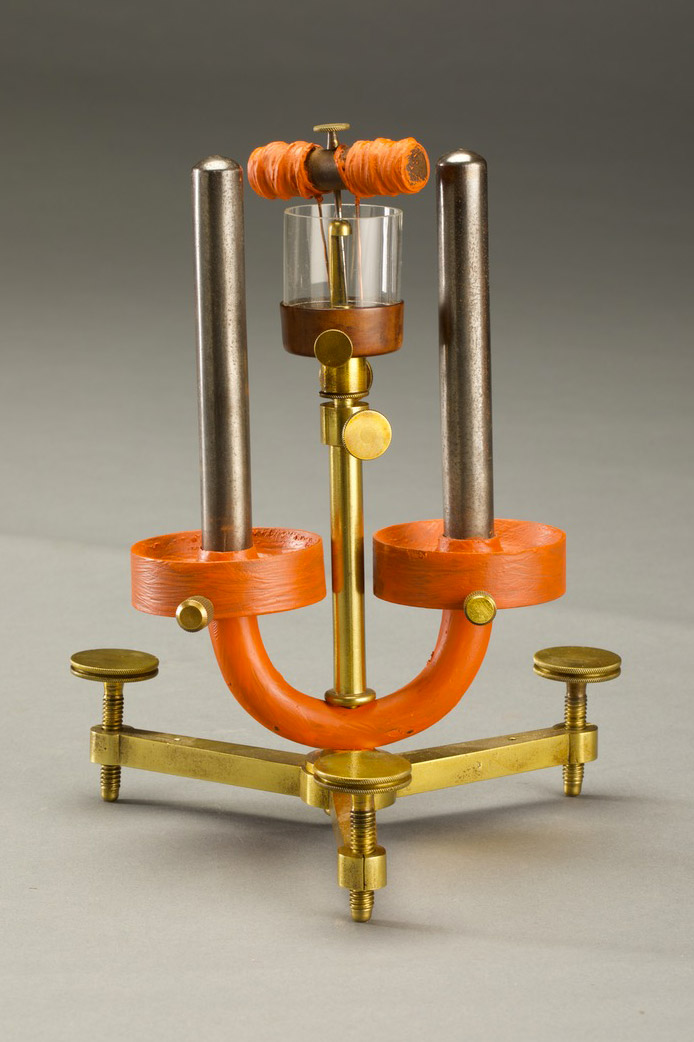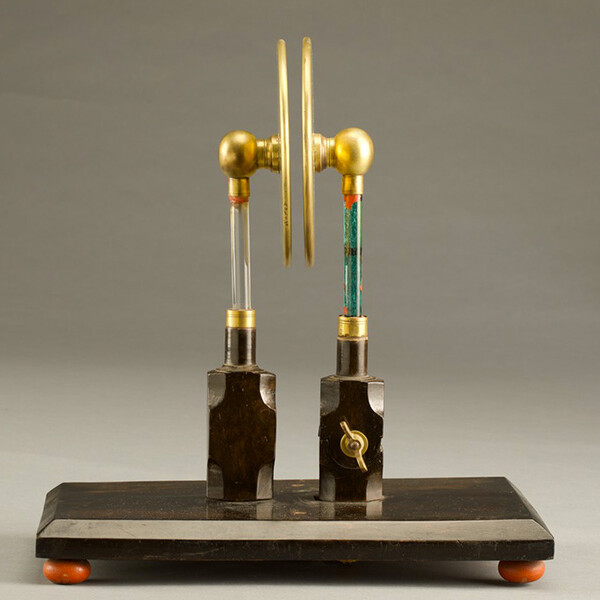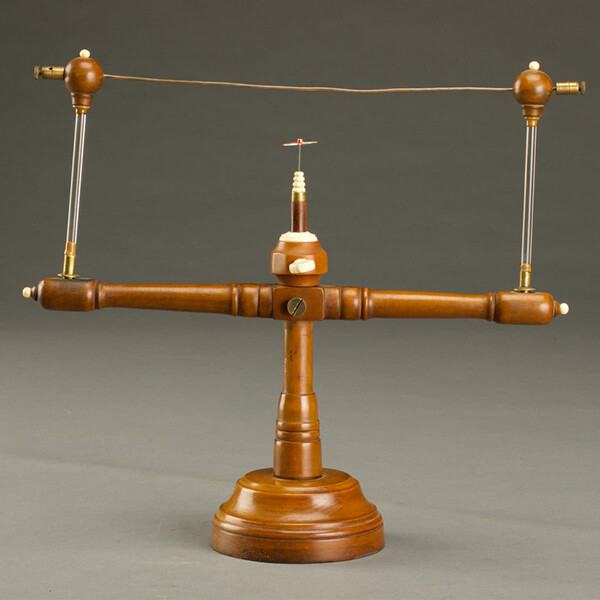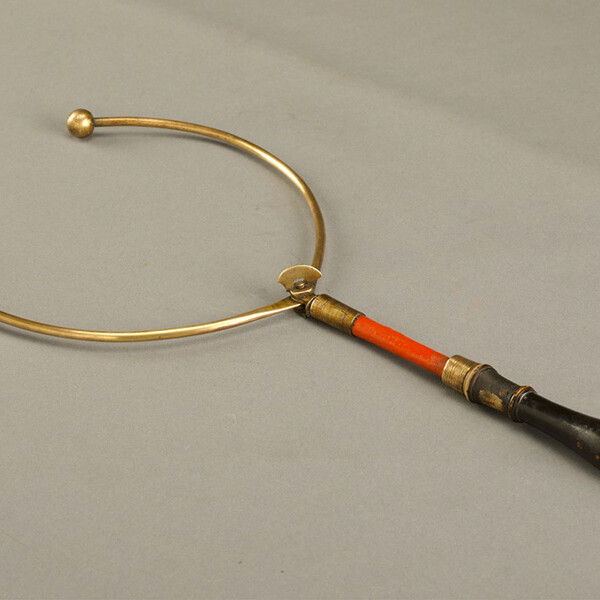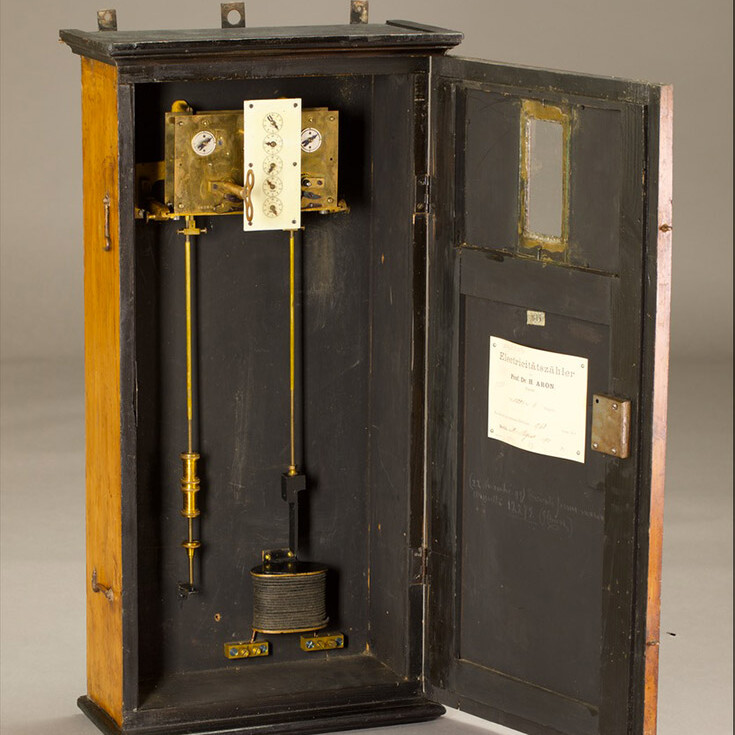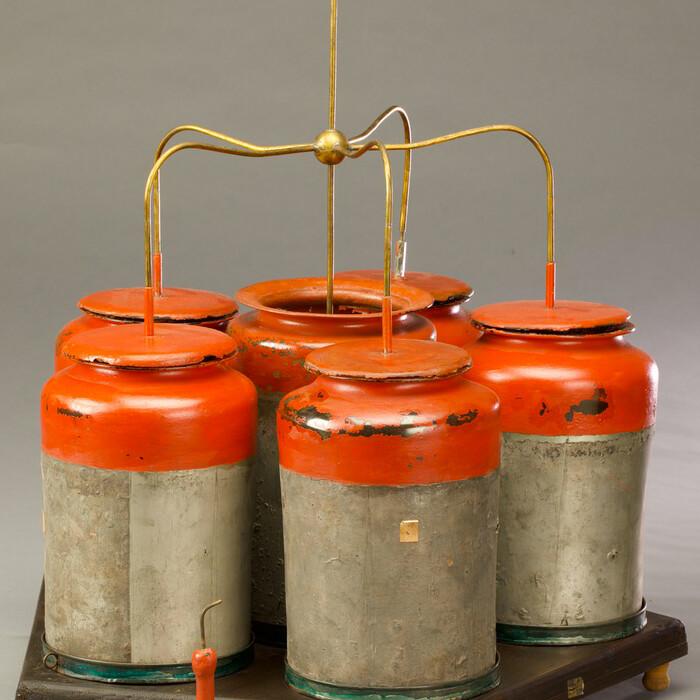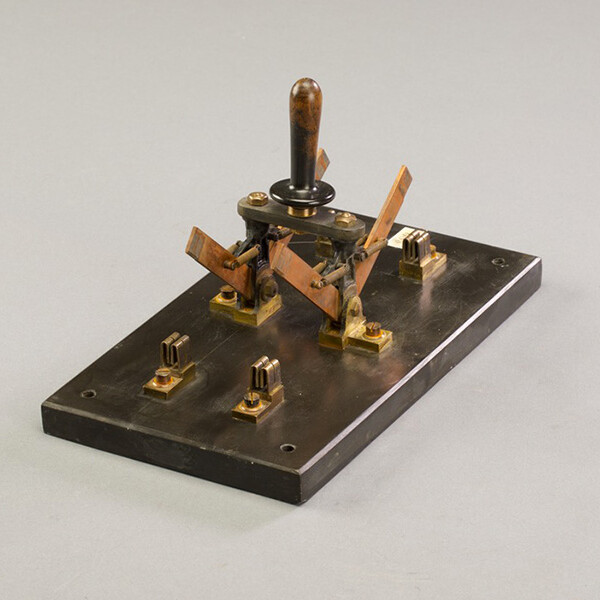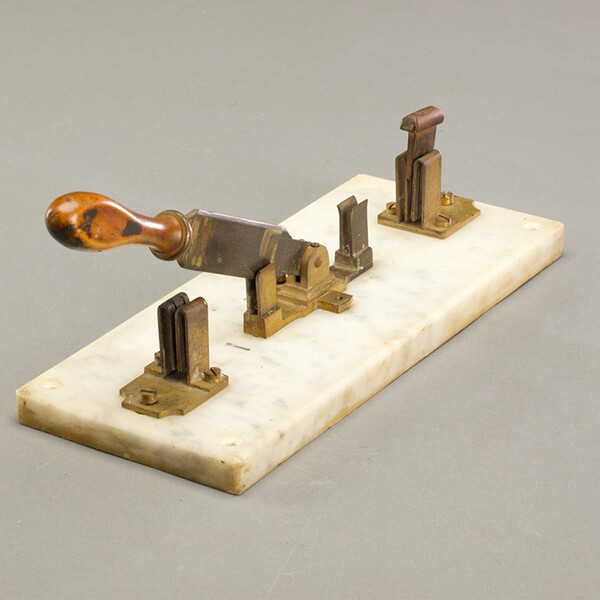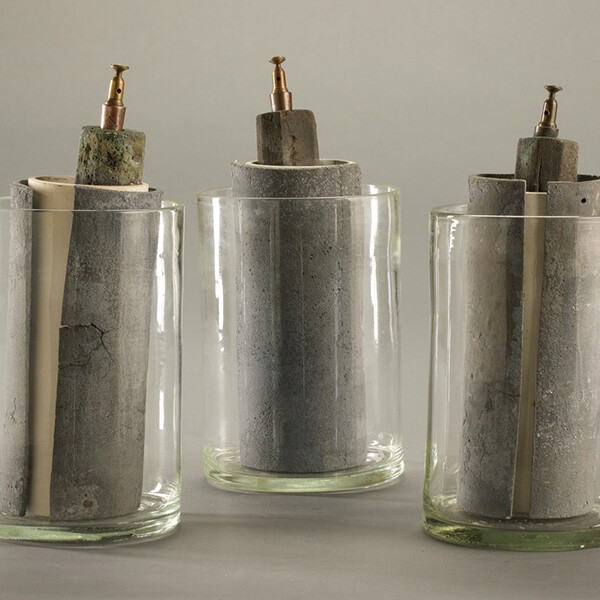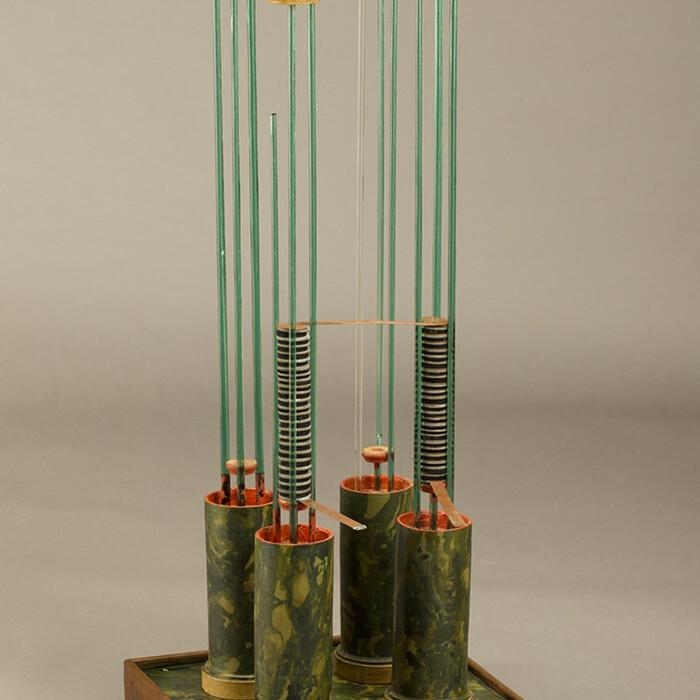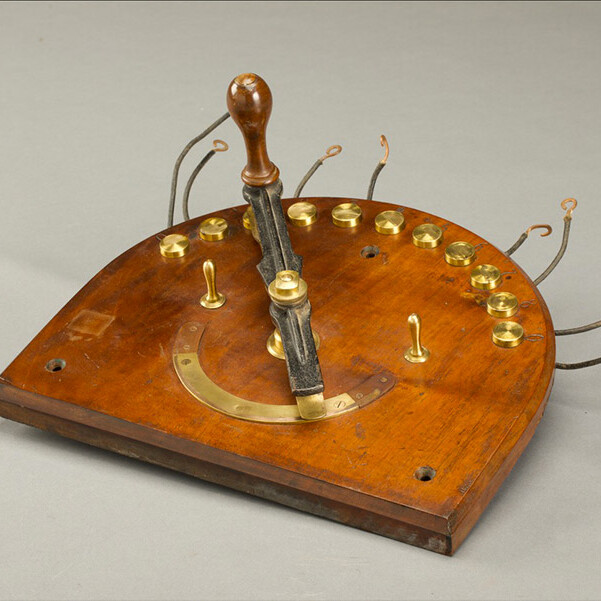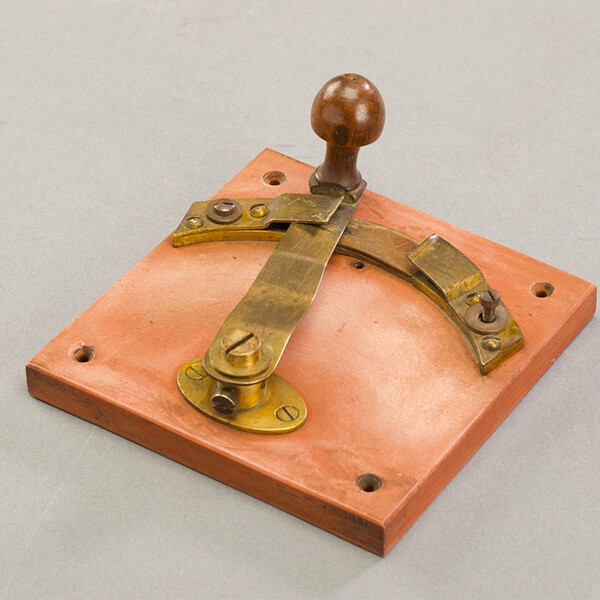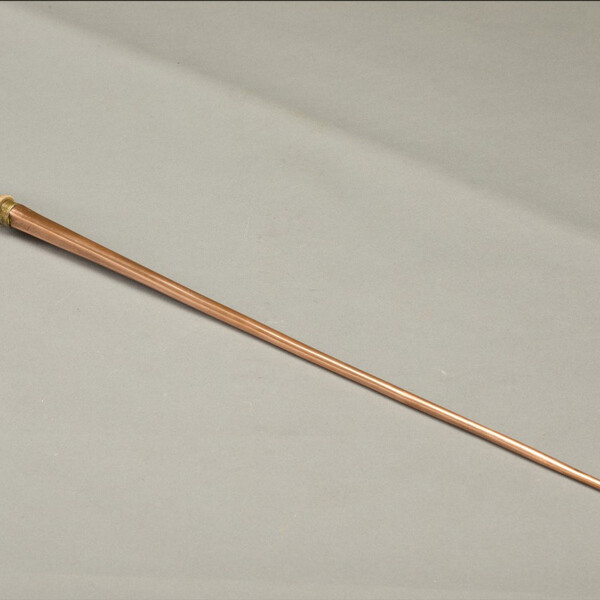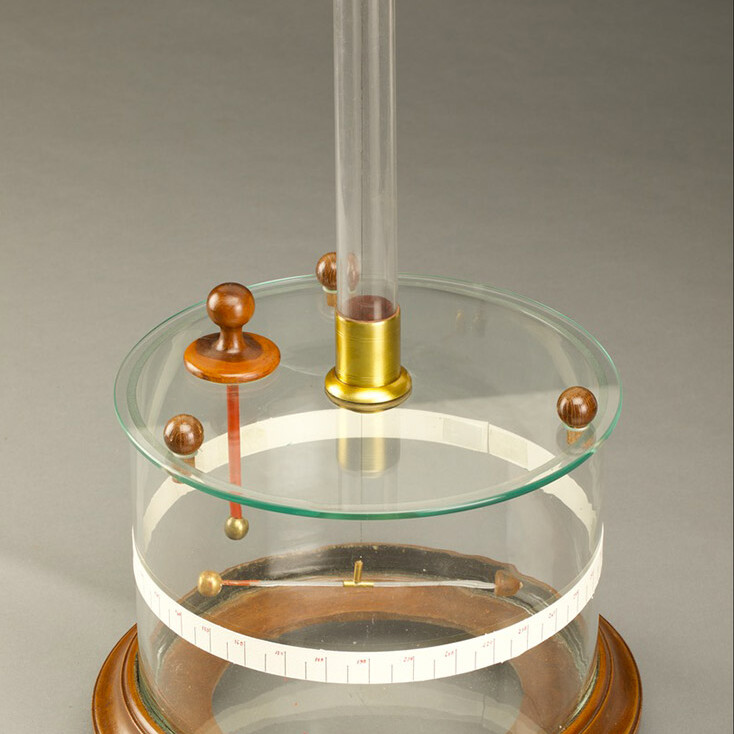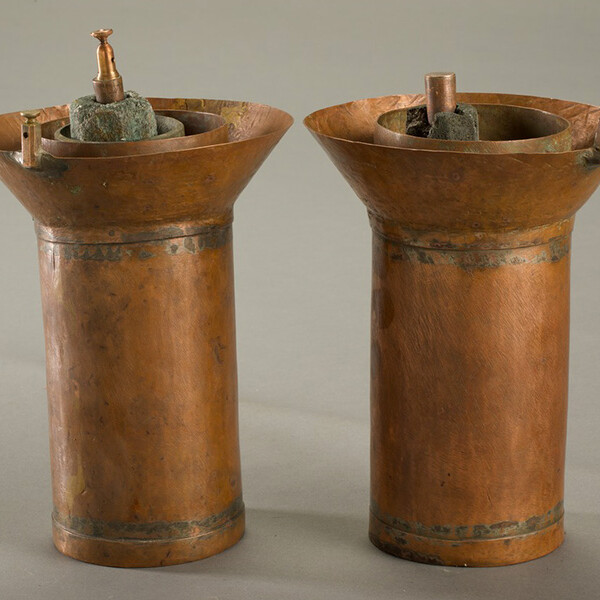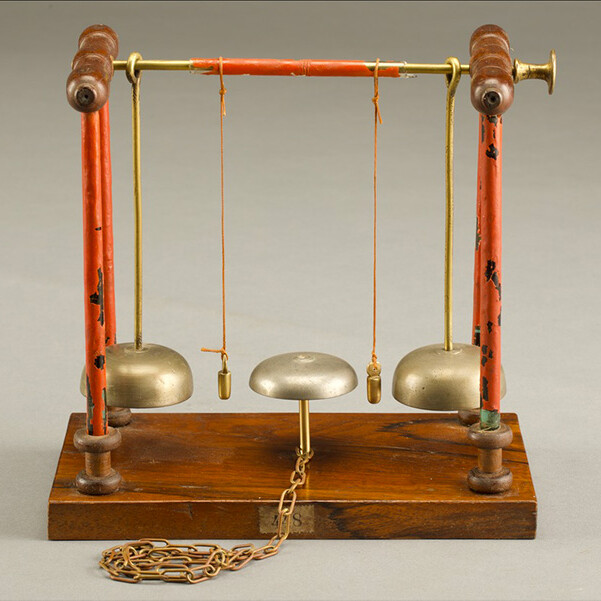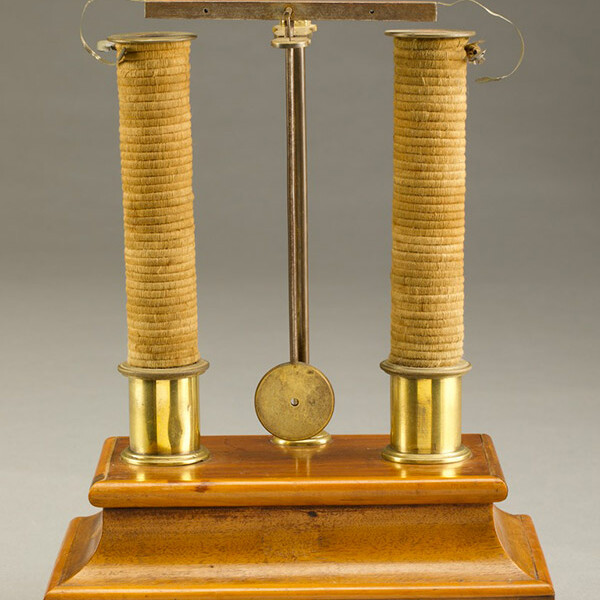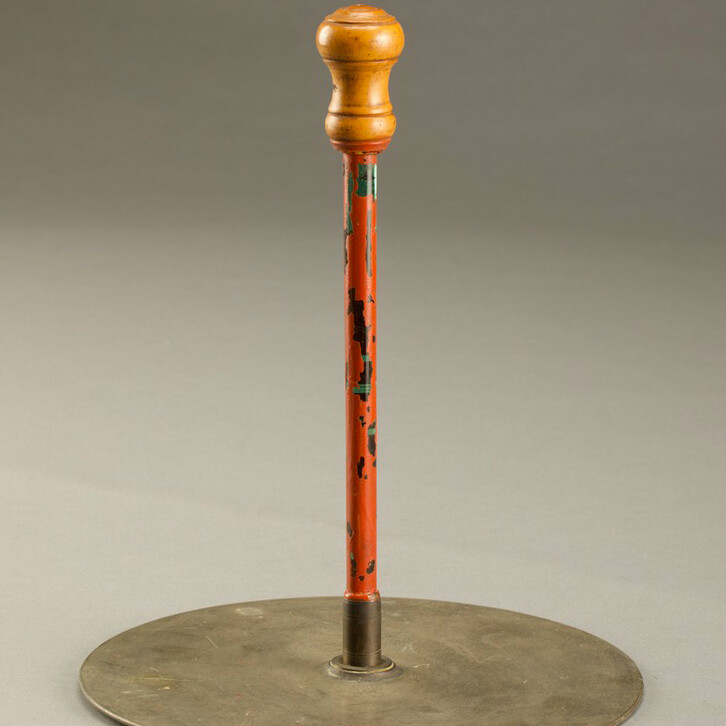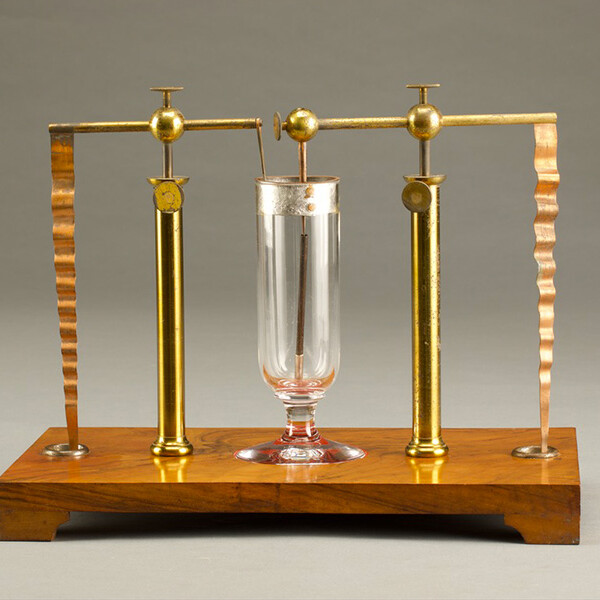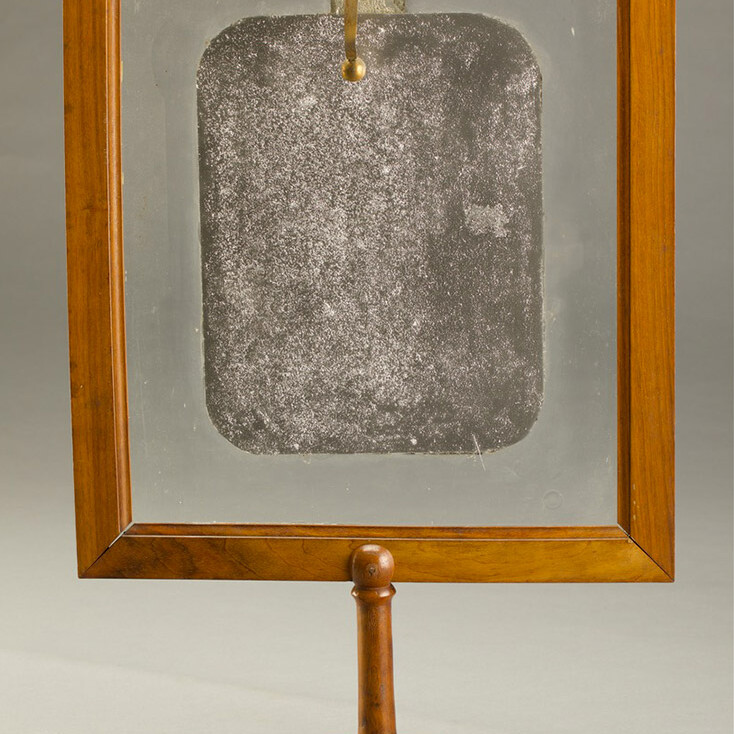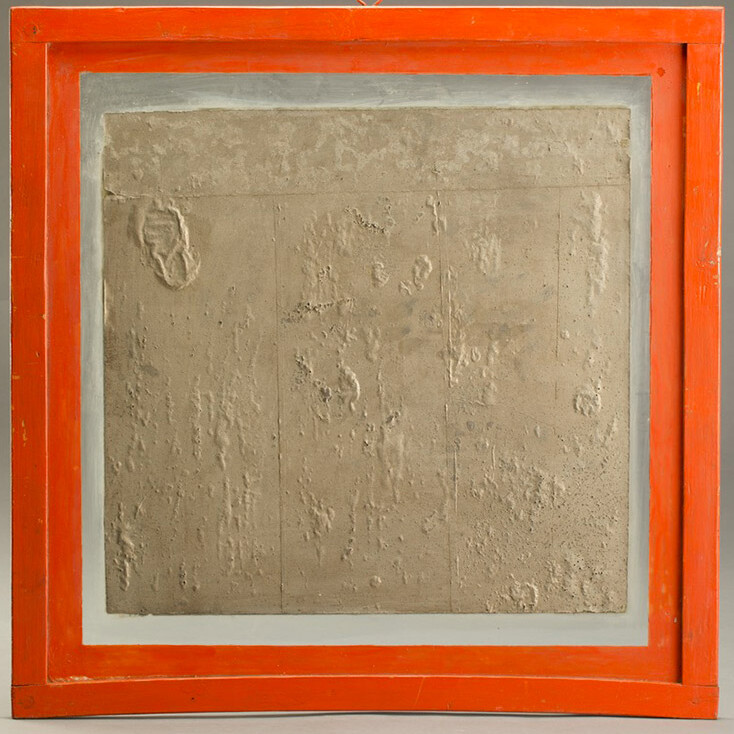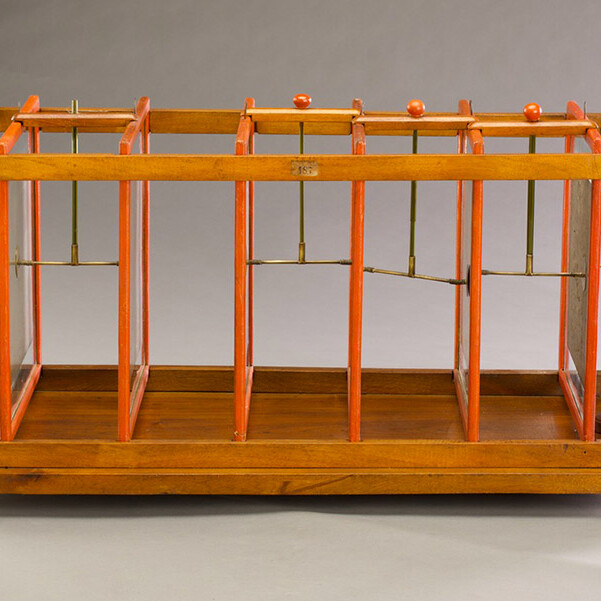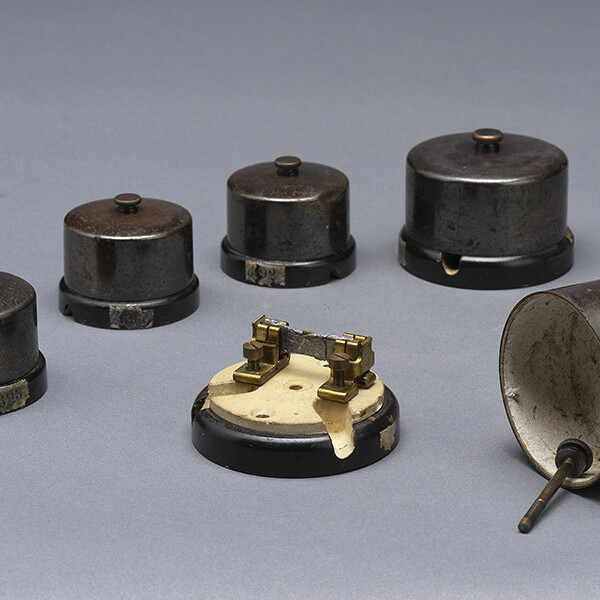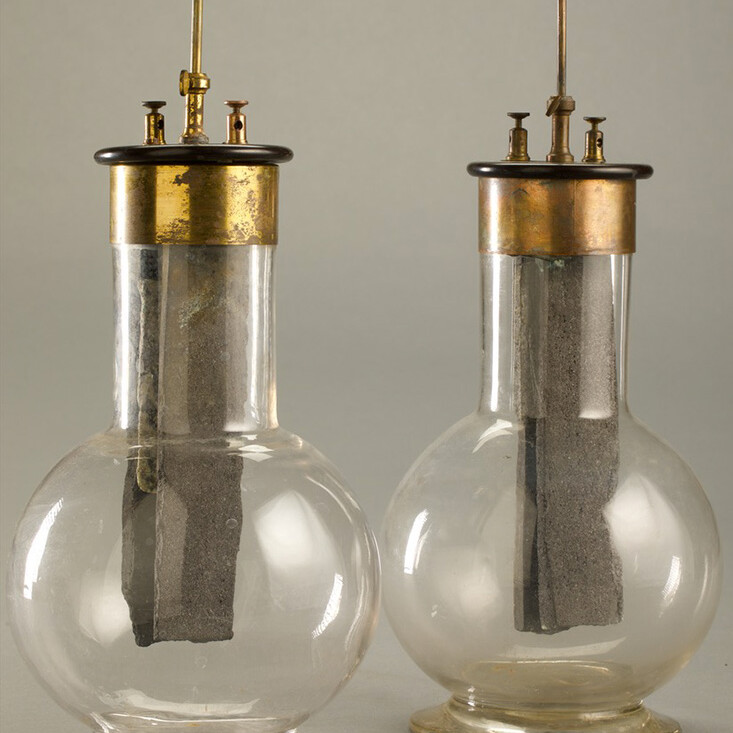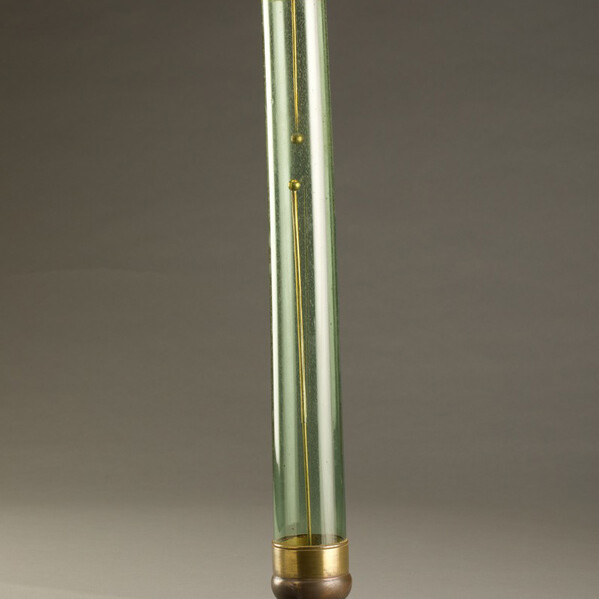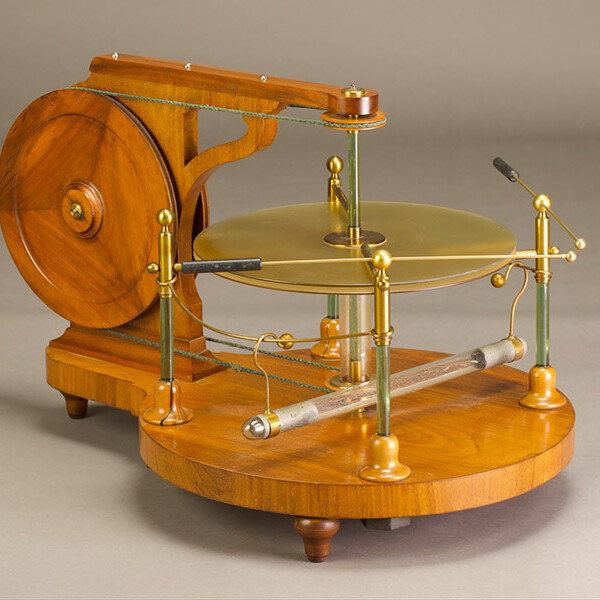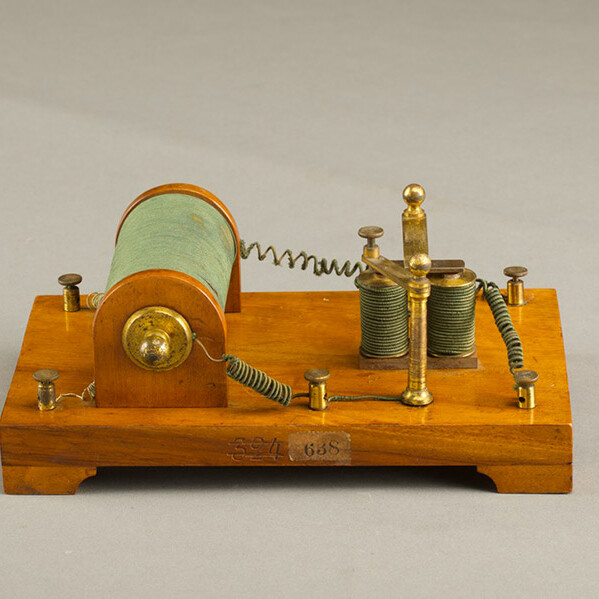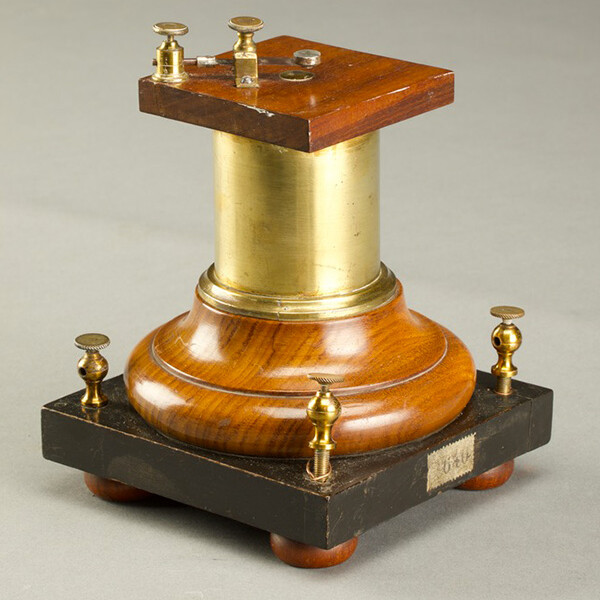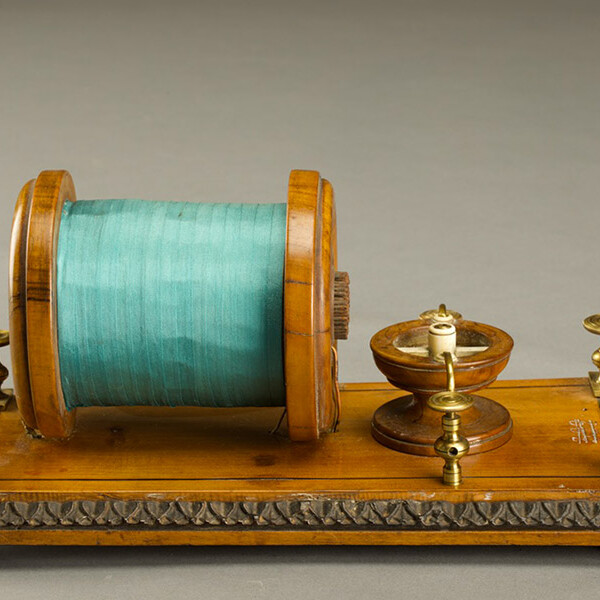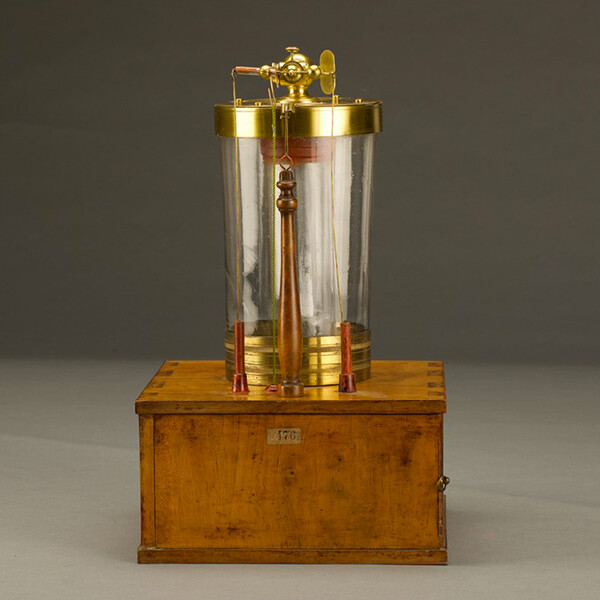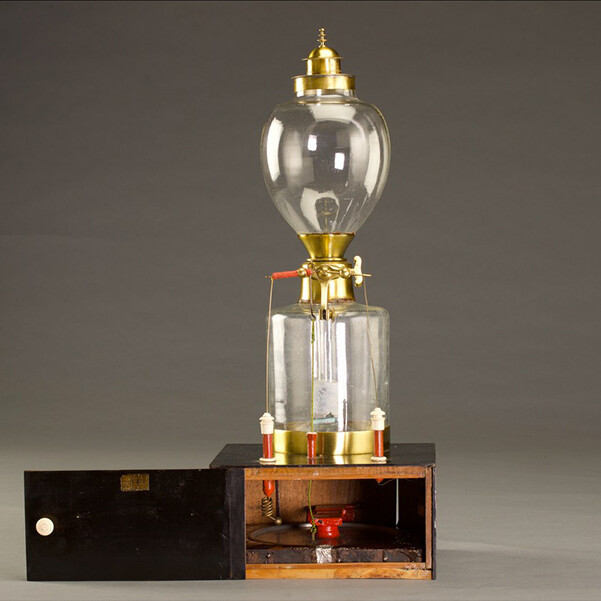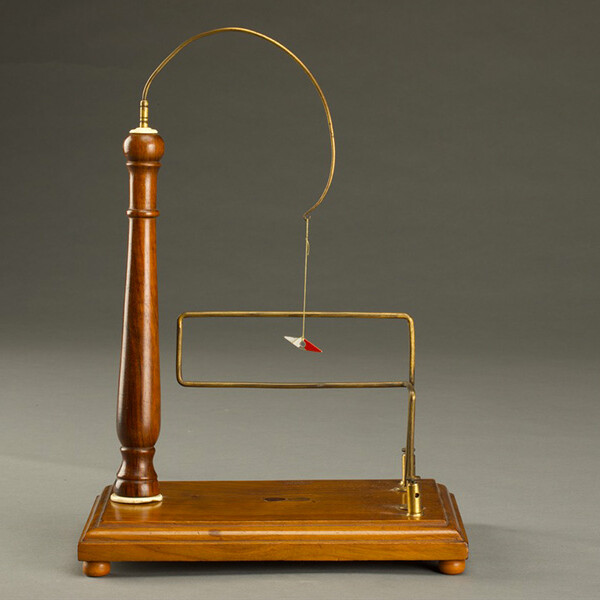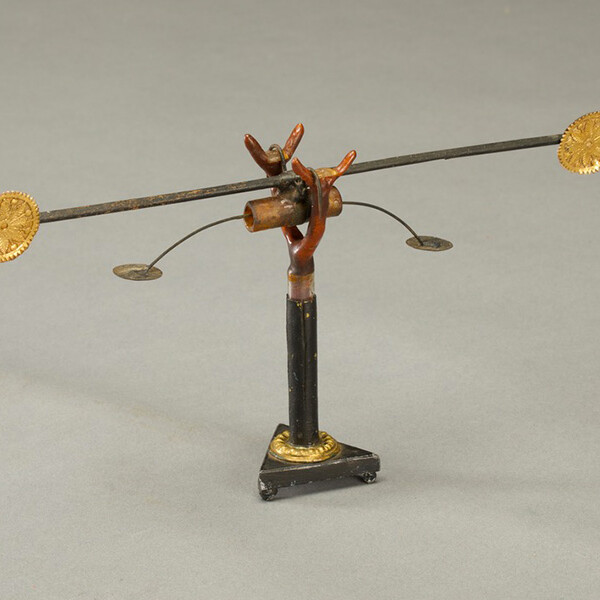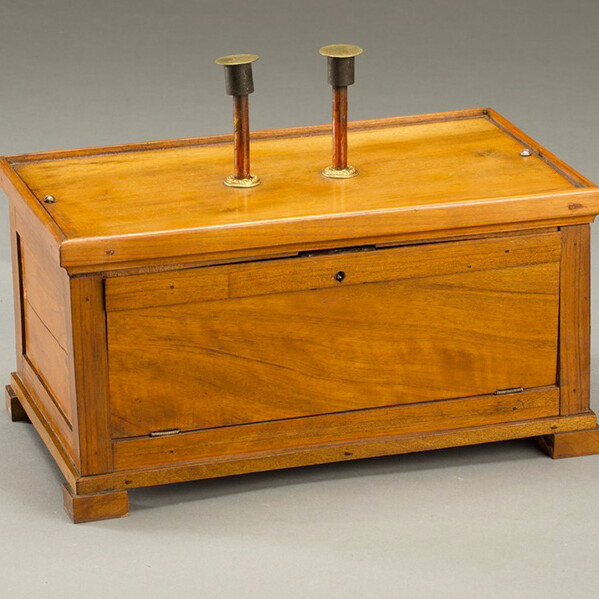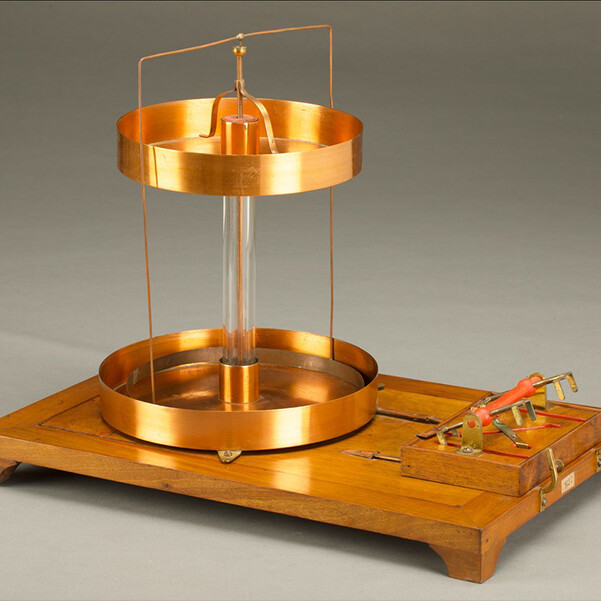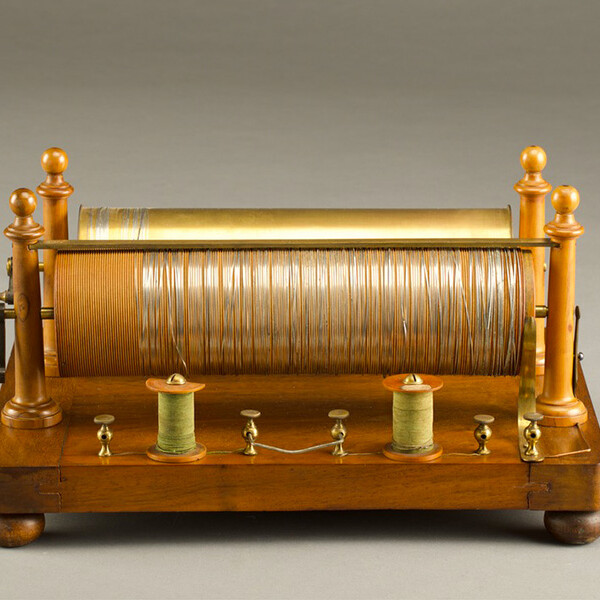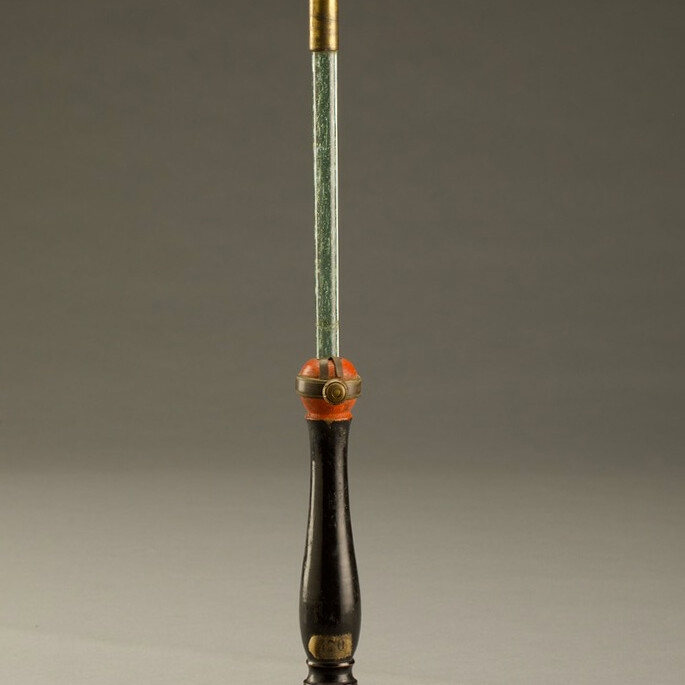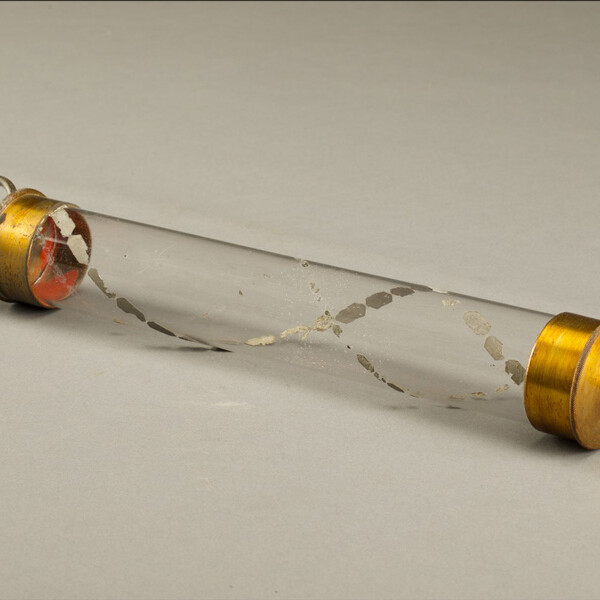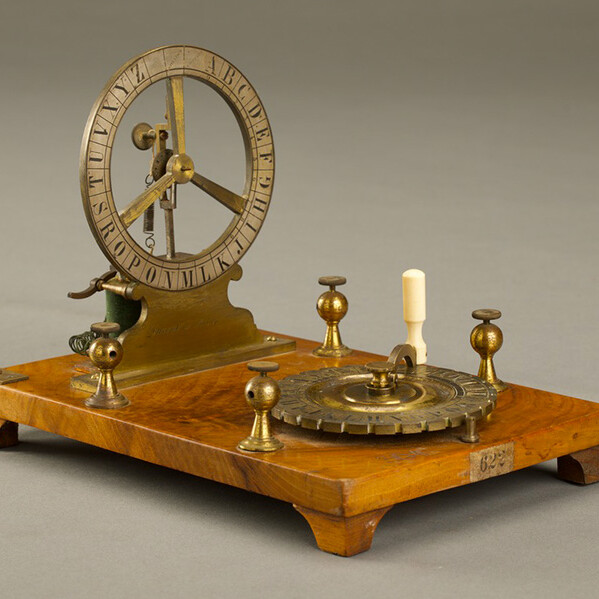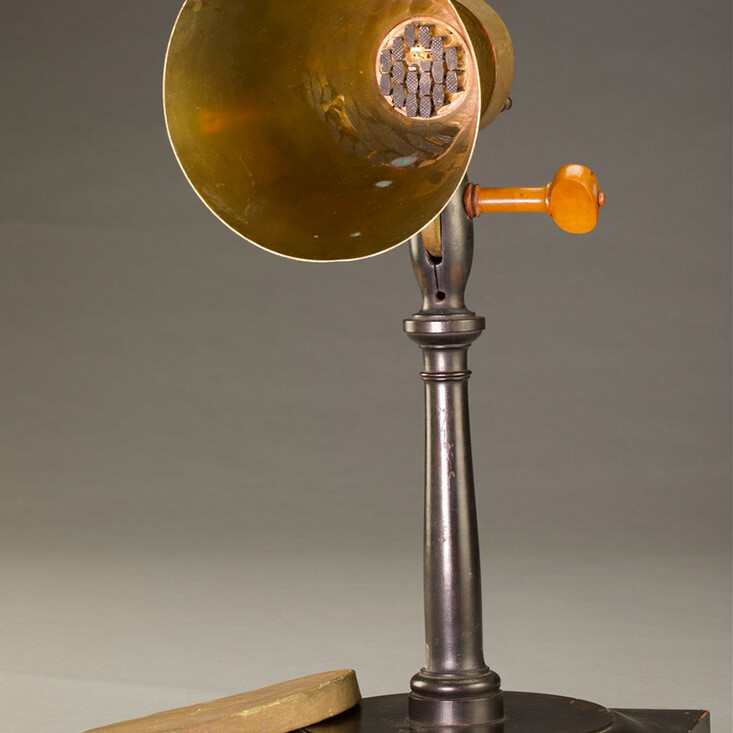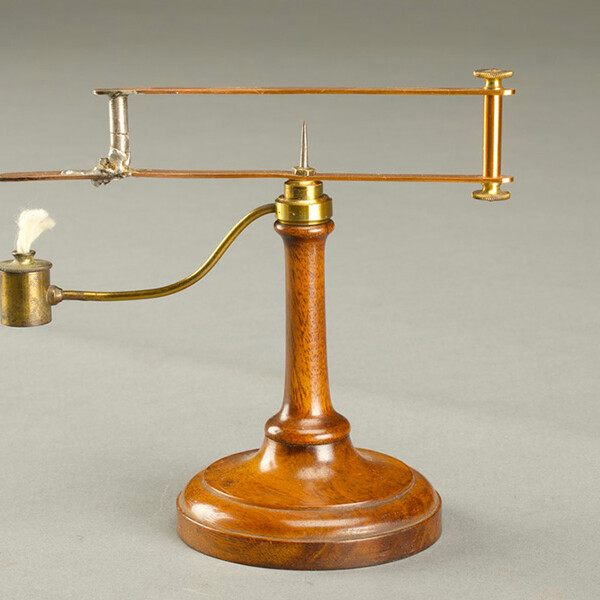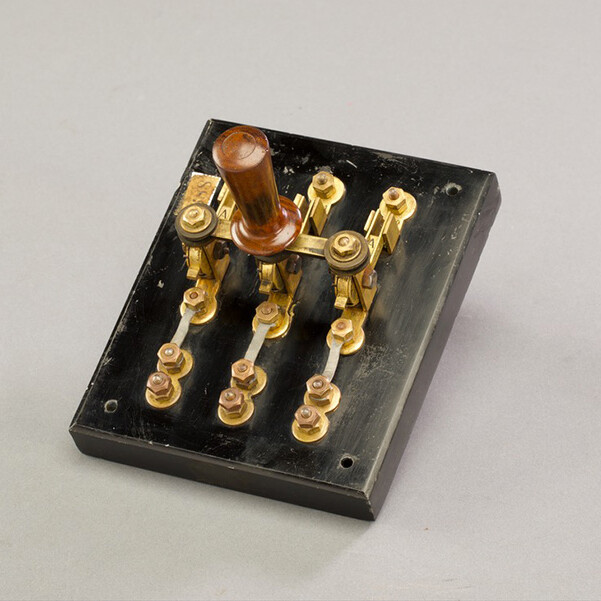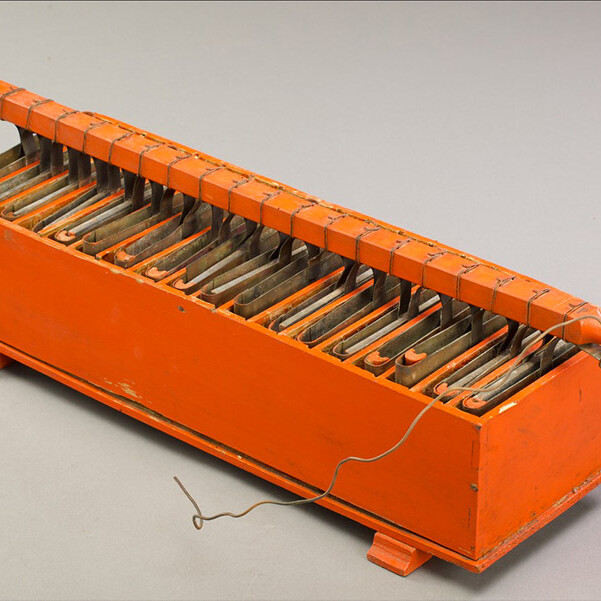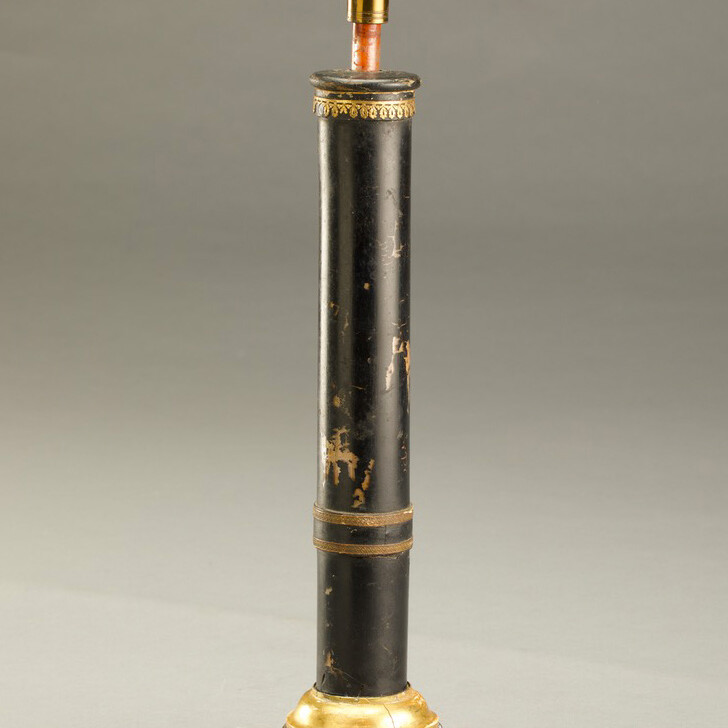By means of this apparatus, a vertical U-shaped magnet mounted on a tripod, two phenomena may be demonstrated: the basic mechanism of the electromagnetic motor designed by the English physicist William Ritchie (1790 – 1837), and the rotation of an electric circuit due to a magnetic field.
To demonstrate the operation of the electromagnetic motor, mercury is placed in the two-compartment glass container fixed to the central support, on which is also mounted an electromagnet formed by an iron rod with a coil of wire wound around each end. The wires of these two coils end in the tray containing mercury. When the two compartments of the glass container are connected to the terminals of a battery, the current activates the electromagnet, generating a magnetic field around it whose polarity depends on the direction of current flow. The electromagnet is thus attracted to, or repelled by, the terminal of the U-shaped magnet it faces. When it rotates, at each half-turn the ends of the coils reverse the polarity of the current as they move from one mercury compartment to the other; consequently the polarity of the field around the electromagnet is also reversed. The result is that the electromagnet rotates continually.
To show the rotation of the current, additional frames are mounted above the enlarged parts of the magnet and mercury is placed in the two wooden rings equipped for connection to a battery. When current flows through the frame, it starts spinning due to the forces acting between the current and the magnet.
Device on display.
